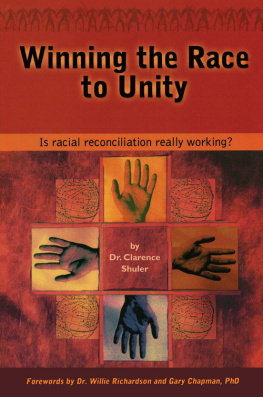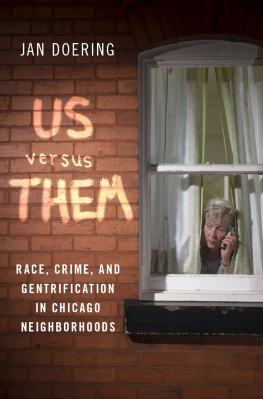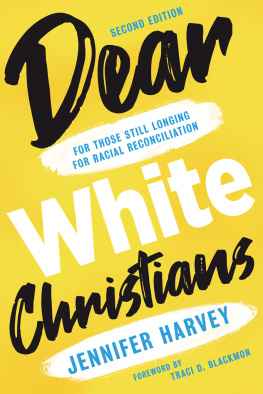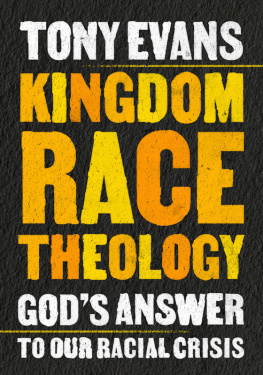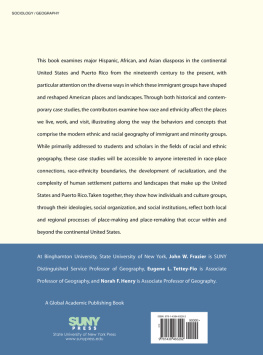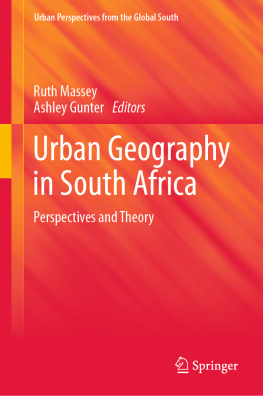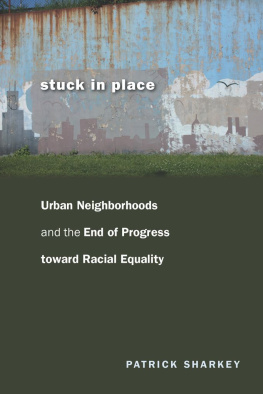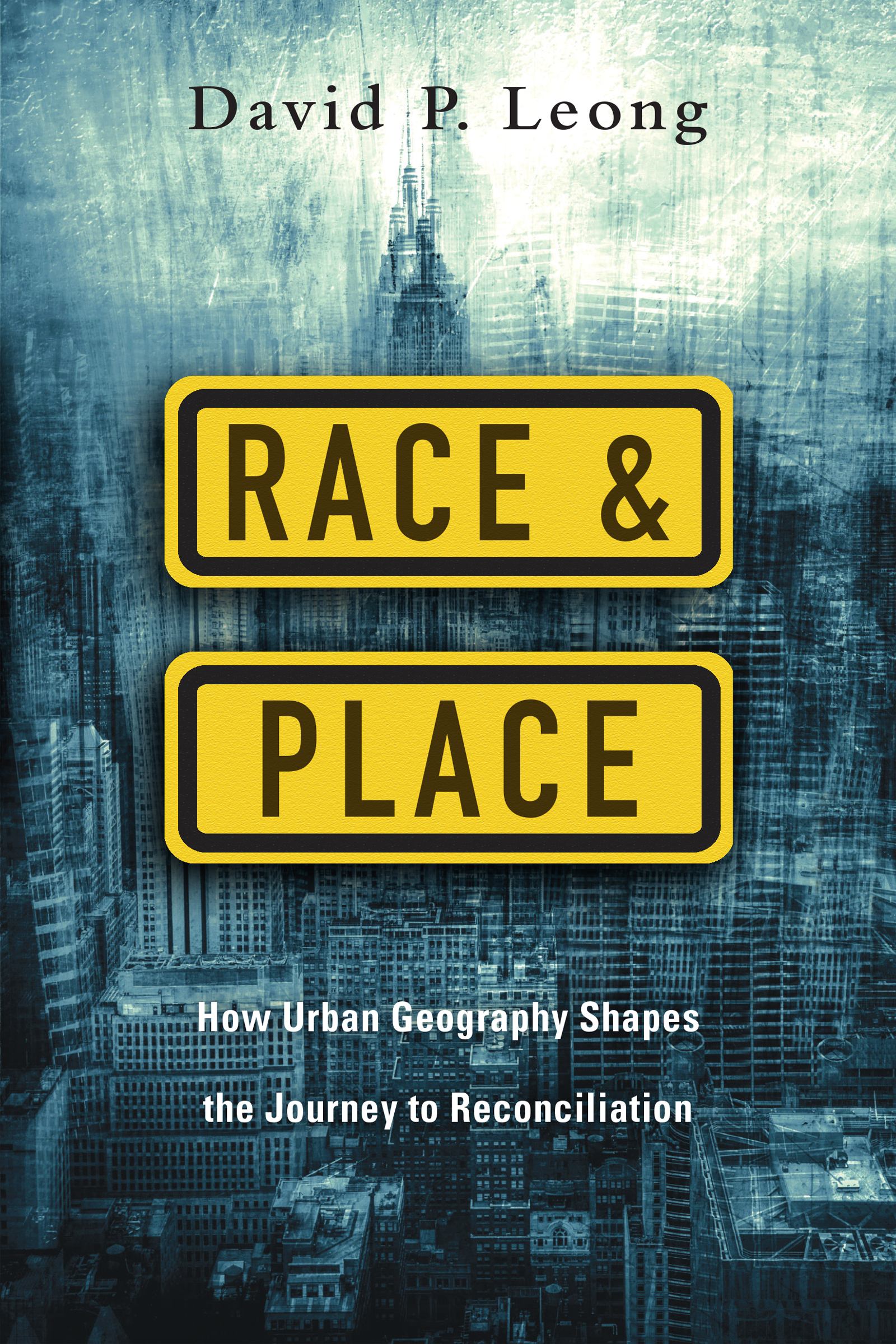How Urban Geography Shapes
the Journey to Reconciliation
David P. Leong
Foreword by Soong-Chan Rah

InterVarsity Press
P.O. Box 1400, Downers Grove, IL 60515-1426
ivpress.com
2017 by David P. Leong
All rights reserved. No part of this book may be reproduced in any form without written permission from InterVarsity Press.
InterVarsity Pressis the book-publishing division of InterVarsity Christian Fellowship/USA, a movement of students and faculty active on campus at hundreds of universities, colleges, and schools of nursing in the United States of America, and a member movement of the International Fellowship of Evangelical Students. For information about local and regional activities, visit intervarsity.org.
All Scripture quotations, unless otherwise indicated, are taken from THE HOLY BIBLE, NEW INTERNATIONAL VERSION, NIVCopyright 1973, 1978, 1984, 2011 by Biblica, Inc.Used by permission. All rights reserved worldwide.
While any stories in this book are true, some names and identifying information may have been changed to protect the privacy of individuals.
Cover design: Cindy Kiple
Images: abstract NYC art: littleny/iStockphoto
turn right sign: jojoo64/iStockphoto
ISBN 978-0-8308-8102-4 (digital)
ISBN 978-0-8308-4134-9 (print)
Library of Congress Cataloging-in-Publication Data
Names: Leong, David P. (David Paul), author.
Title: Race and place : how urban geography shapes the journey to
reconciliation / David P. Leong.
Description: Downers Grove : InterVarsity Press, 2017. | Includes
bibliographical references and index.
Identifiers: LCCN 2016046181 (print) | LCCN 2016046927 (ebook) | ISBN
9780830841349 (pbk. : alk. paper) | ISBN 9780830881024 (eBook)
Subjects: LCSH: Cities and townsReligious aspectsChristianity. |
Christianity and geography. | Reconciliation--Religious
aspectsChristianity.
Classification: LCC BR115.C45 L46 2017 (print) | LCC BR115.C45 (ebook) | DDC
234/.5dc23
LC record available at https://lccn.loc.gov/2016046181.
To Chris, Jonas, and Micah,
who keep my feet on the ground
and my eyes on the horizon.
Foreword
Soong-Chan Rah
As a kid growing up in an inner-city neighborhood in Baltimore, I learned very early the importance of geography. You knew there were certain boundaries and geographic markers that you did not cross. The cemetery was off limitsthats where all the beat downs occurred. You either walked around that geographic boundary or you learned to run real fast. The urban neighborhood of my elementary and middle school years included poor blacks, poor whites, and poor Korean immigrants. We all lived in the same apartment complex, attended the same middle school, and shared the common experience of poverty. Yet despite our proximity and our commonality, the neighborhood was starkly divided along racial lines. Shared space did not yield shared lives.
During my high school years, my family lived in a middle-class suburban neighborhood. The planned community of this neighborhood offered a different type of geography but seemingly the same type of separation. Different patterns of life, connections, and relationships were pursued in the suburbs vis--vis the city, but the same results emerged. Ironically, in a planned neighborhood built with the intention of generating a happy community, the same narrative from my inner-city neighborhood remained: shared space did not yield shared lives.
Over the last several decades, I have sought to better understand how race relations in America have impacted and shaped US social history. I have sought to better understand how the formation of a dysfunctional social imagination has created a wounded church and a broken society. I have sought to better understand how biblical justice intersects with the reality of injustice in our world. And I have come to the conclusion that the pursuit of biblical justice in the United States requires the uncomfortable, painful, and even polarizing pursuit of racial justice.
However, this high-stakes conversation, and its dealings with the whole spectrum of racial justice that understands the social-historical context of American society, is exhausting work. Those of us who have been in the fight grow weary from the ongoing process of explanation, particularly for people of color who constantly explain, from a myriad of angles, with their explanations and analysis oftentimes falling on deaf years. Ed Gilbreath said it best when he described the concept of racial fatigue.
In recent years, there has been a resurgence of interest by American Christians in the biblical call to justice ministry. However, this interest has not always yielded a deeper engagement in the hard work needed to enact biblical justice. A closer look at the fad of urban ministry reveals our error, for without rigorous cultural exegesis and social analysis, those who move to the city to be urban missionaries are simply urban colonizers. This reminds us that ministry in the complex geography of American society can never be understood in a vacuum. It must be understood in the full range of complexity. This book offers a way into that complexity.
To change the social imagination of a community, a church, a denomination, and even a nation requires hard work. For those who are just beginning their journey toward biblical racial justice, this book offers an important primer. For those who have grown weary of trying to explain the reality of injustice in the world, this book offers markers and guideposts to persevere in that conversation. I am so grateful for David Leongs fresh and unique look at race in America. I will never look at another freeway, public school, or suburban home the same way again. The book offers the needed work of cultural and social exegesis and also offers the potential positive power of the Christian imagination. Allow David Leonga scholar, a pastor, an urbanite, a deeply spiritual and thoughtful follower of Jesusto guide you through this important theological journey.
Introduction
Street Signs and Color Lines
With all the distracted drivers on our roads these days, it seems a fitting reminder to pay attention to our surroundings. For example, its important to read street signsslow down, children present, school zone, construction ahead, and so forth. These kinds of street signs are obvious and provide pertinent information. But there are also other kinds of signs on our streets, some less obvious, but no less important. In fact, many of the signs most deserving of our attention take various forms, and some of the most meaningful signs are the ones we may not see as signs at all. Rather, they are signs of the times, whether complex cultural texts or the prophetic signs Jesus speaks of in Matthew 16:3.
In our cities today, one sign of the times is that our streets have been burning, both literally and figuratively. From Ferguson to Baltimore, and many places in between, the fires of racial unrest have once again erupted in urban communities that have historically faced cycles of generational poverty and structural inequalities. Some of us have been burned by these injustices, while others have simply watched from a distance in confusion or disbelief. I believe that our understanding of these street signs depends largely on our geography, that is, our physical and social location in life. Whether we recognize it or not, too many of our livesespecially in our citiesare functionally segregated by issues of race and class.


